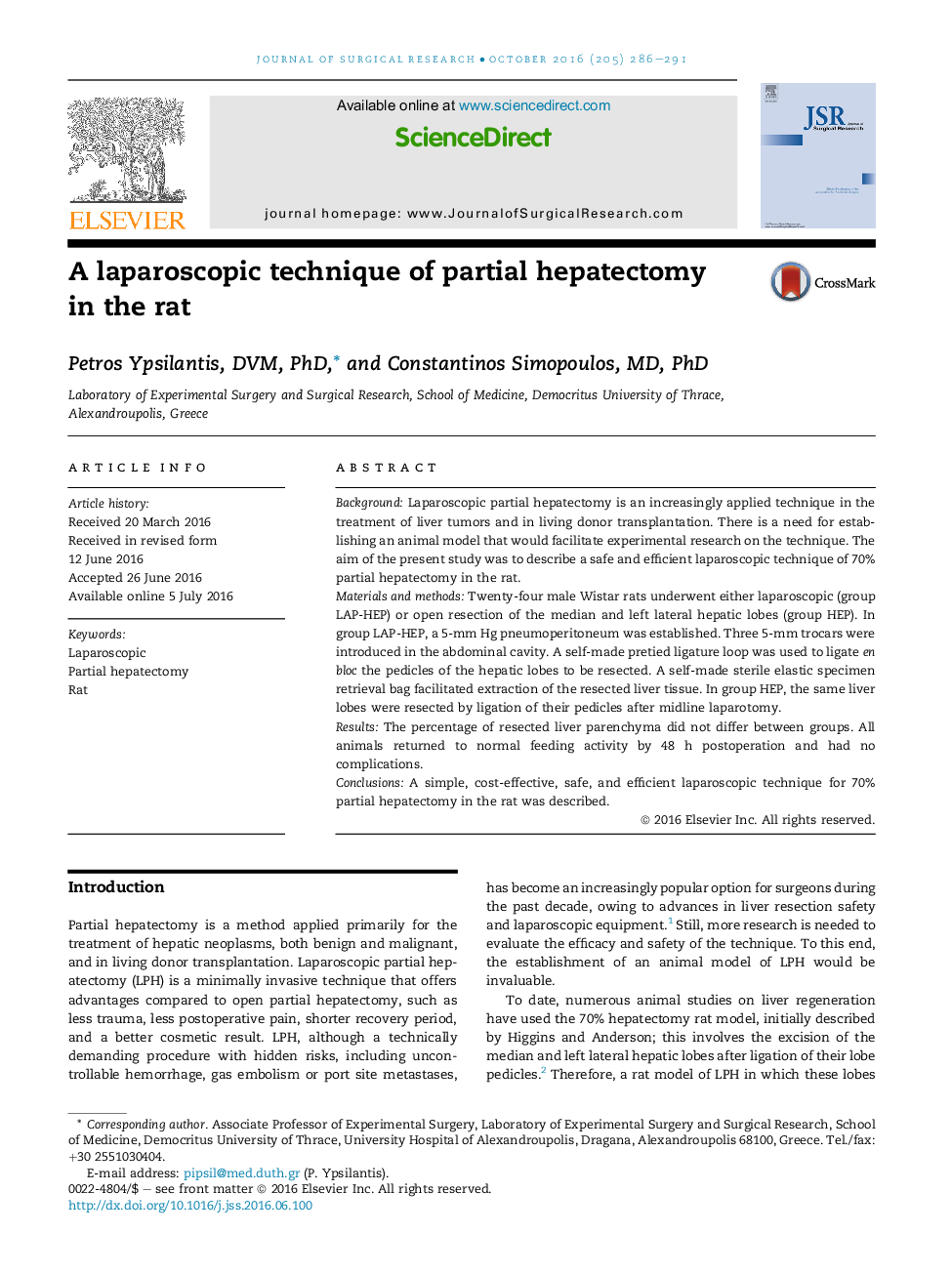| Article ID | Journal | Published Year | Pages | File Type |
|---|---|---|---|---|
| 4299035 | Journal of Surgical Research | 2016 | 6 Pages |
BackgroundLaparoscopic partial hepatectomy is an increasingly applied technique in the treatment of liver tumors and in living donor transplantation. There is a need for establishing an animal model that would facilitate experimental research on the technique. The aim of the present study was to describe a safe and efficient laparoscopic technique of 70% partial hepatectomy in the rat.Materials and methodsTwenty-four male Wistar rats underwent either laparoscopic (group LAP-HEP) or open resection of the median and left lateral hepatic lobes (group HEP). In group LAP-HEP, a 5-mm Hg pneumoperitoneum was established. Three 5-mm trocars were introduced in the abdominal cavity. A self-made pretied ligature loop was used to ligate en bloc the pedicles of the hepatic lobes to be resected. A self-made sterile elastic specimen retrieval bag facilitated extraction of the resected liver tissue. In group HEP, the same liver lobes were resected by ligation of their pedicles after midline laparotomy.ResultsThe percentage of resected liver parenchyma did not differ between groups. All animals returned to normal feeding activity by 48 h postoperation and had no complications.ConclusionsA simple, cost-effective, safe, and efficient laparoscopic technique for 70% partial hepatectomy in the rat was described.
